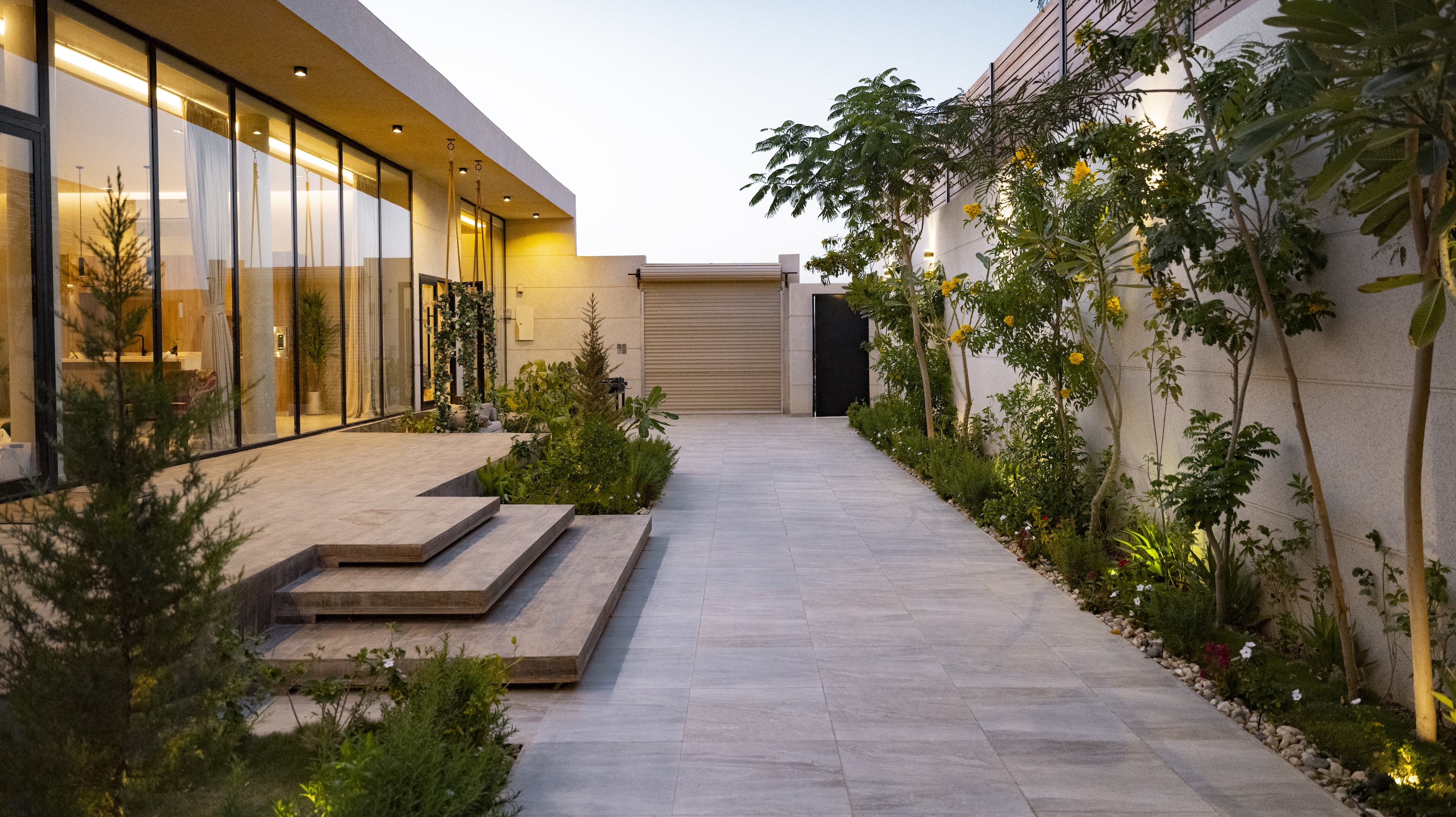
Patio lighting might feel more of a summer concern, when we spend more time outside, yet throwing some light on your outdoor space on dark winter evenings (or afternoons) can add a cozy glow and increase security.
Whether your existing patio ideas already include lighting or not, it's worth reviewing them to see if they meet your needs across all of the seasons.
There may be areas around or near your patio that require extra garden lighting in the winter for visibility, so you can access pathways, garden offices, garages or outdoor storage. Or you may want to enjoy evenings outside for as long as the temperature allows.
Whatever your living arrangements and location, landscape designers have plenty of patio lighting ideas to inspire you — let's take a look at their suggestions.
"By implementing lighting schemes, you can successfully extend the usability of your patio during winter months," says Nina Lichenstein, founder of Custom Home Design by Nina Lichtenstein.
"Layered wall and ceiling lighting, ground and pathway illumination, and charming string lights create an inviting atmosphere that encourages outdoor enjoyment," she adds. "When planned effectively, these lighting solutions not only enhance the beauty of your space but also ensure you can savor the magic of winter evenings outdoors."
1. Install wall sconces
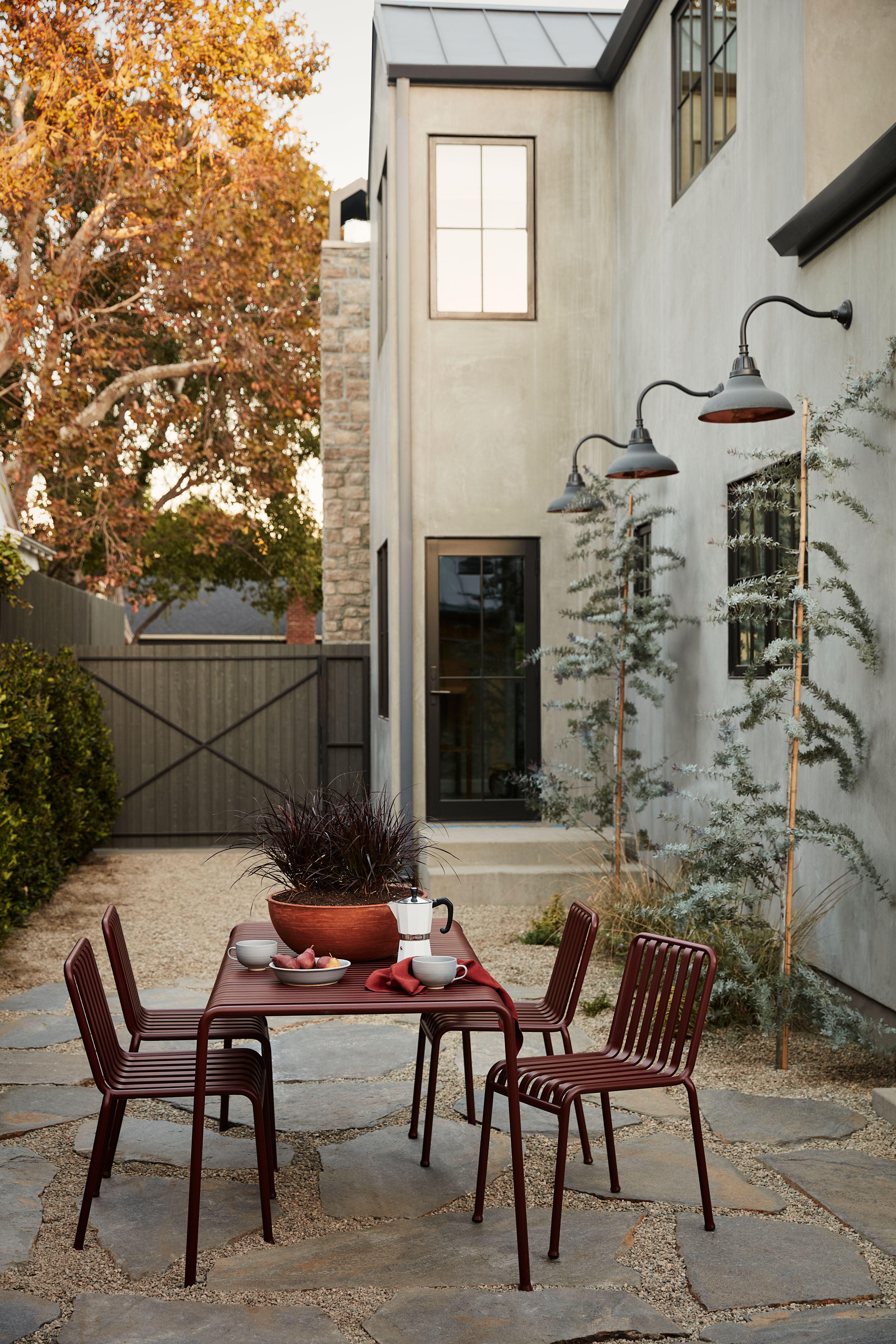
Placing wall lamps on either side of a front door or back door helps illuminate the entryways to your home. However, installing extra wall sconces along a back or side wall can enable you to use your outside space for a little longer on dark days.
"Installing stylish wall sconces on the exterior walls of your home will cast a warm glow, drawing attention to your patio," says Nina Lichenstein, founder of Custom Home Design by Nina Lichtenstein.
"Choose fixtures that complement your patio decor, whether you prefer a modern sleek design or a rustic lantern style, and fit them with warm LED bulbs."
"Sleek, weatherproof sconces on exterior walls provide soft, ambient lighting and can frame doors or seating areas," says David Thompson, founder of Los Angeles-based design firm Assembledge+. "This offers both functional light and enhances the overall architectural form of the patio."
2. Place solar lights around your patio and pathway
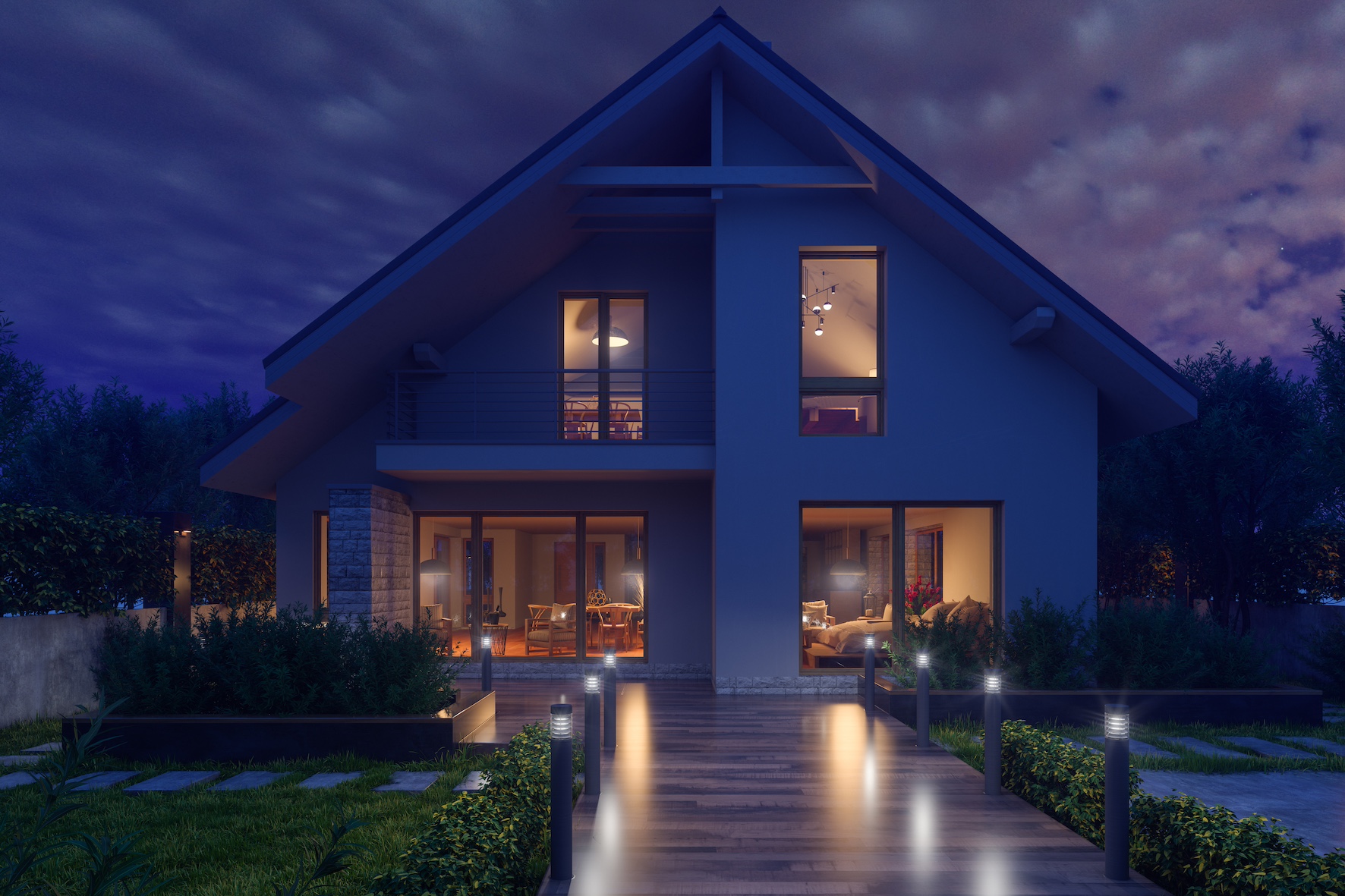
Exterior lighting obviously serves as a practical element, enabling you and others to see where you're going in the dark. Pathway lighting can also be extended around a patio for a subtle and inexpensive way to illuminate your outdoor space.
"Ground-level lighting can significantly enhance safety and aesthetics while extending your outdoor space into the evening," says Nina. "A combination of pathway lights and ground lights can create an inviting ambiance.
"Choose solar-powered lights for eco-friendly illumination along pathways and the perimeter of your patio. Opt for sleek, modern designs or decorative lanterns that suit your style. We recommend spacing solar pathway lights approximately 3 to 4 feet apart along pathways for consistent lighting without creating dark spots."
David Thompson adds "Frosted, solar-powered lights provide soft illumination while maintaining an understated aesthetic."
3. Hang string lights across your patio
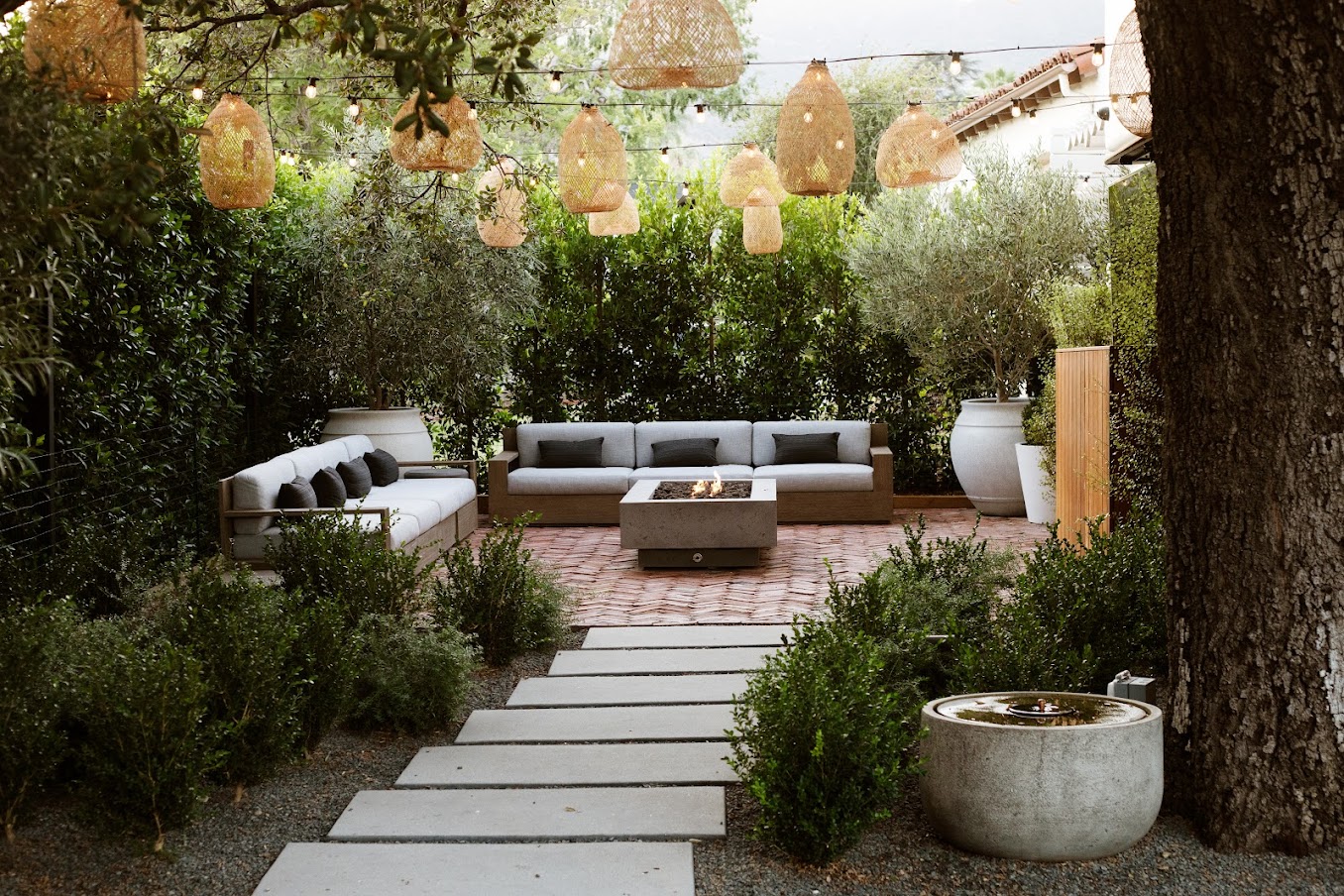
Hanging string lights in your backyard is a great patio lighting idea. Popular in the summer, particularly when hosting parties that will drift on into the night, they can also be hung across a patio in the fall and winter as a charming way to cast a warm glow outside.
"String lights add a whimsical touch and can create a magical atmosphere for winter evenings too," says Nina. "They are versatile and can be used in various configurations to suit your patio's layout.
"When hanging string lights, aim for 3 to 4 feet of space between each bulb for optimal brightness," she advises. "The lights should be hung in a way that they do not sag too low, ensuring they are out of the way but still effective."
4. Accent corners with lanterns
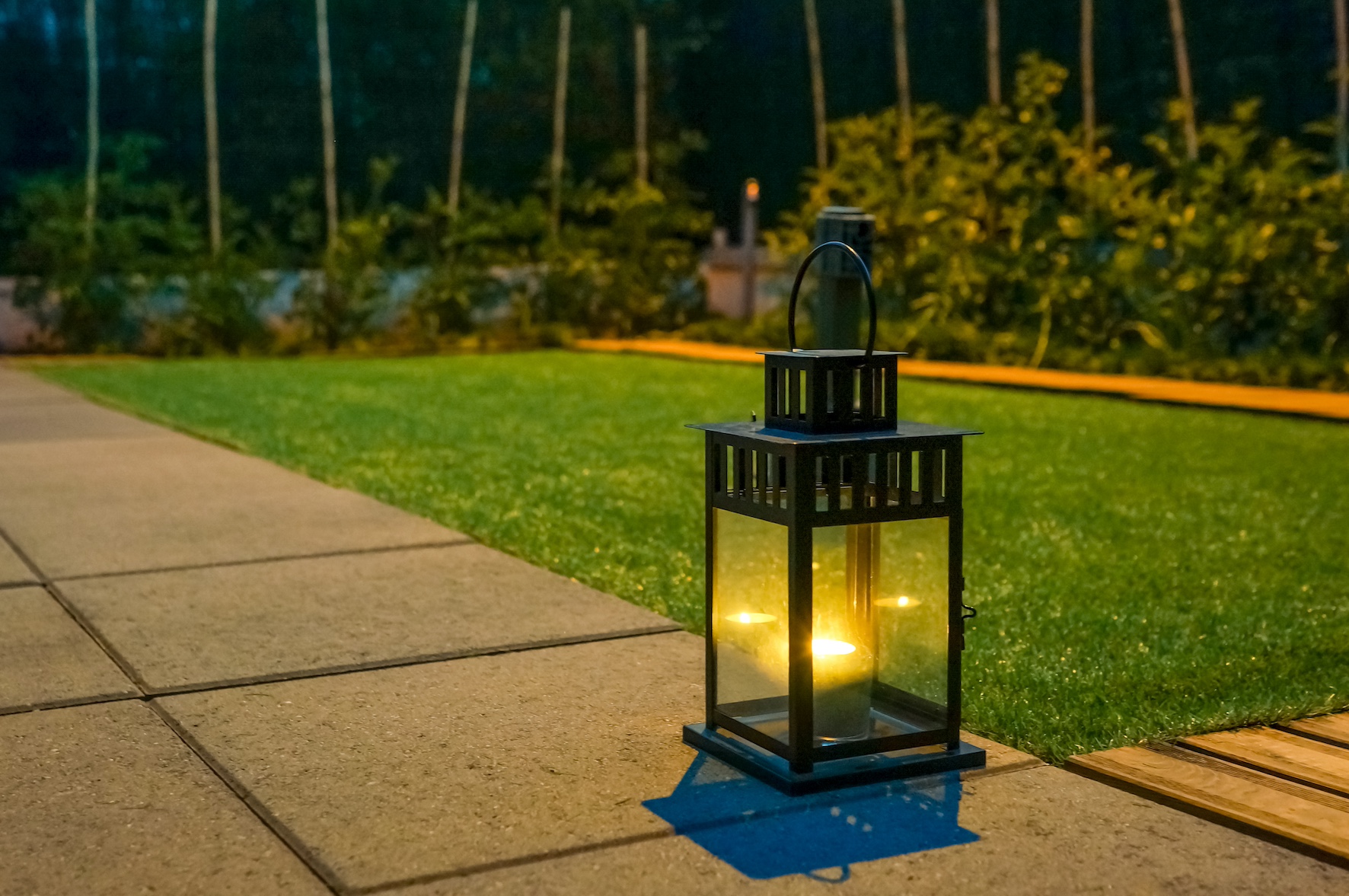
For dark corners or other areas that require illumination, lanterns are an attractive and convenient light source. Another advantage of these modern garden ideas, is that are portable, rather than fixed, so can be moved around according to your needs.
"Incorporate decorative lanterns in planters or on tables to add extra layers of light," says Nina. "LED lanterns and string lights provide ambient lighting during the evening, creating an inviting atmosphere that enhances the view from indoors."
5. Uplight the base of trees or attractive walls
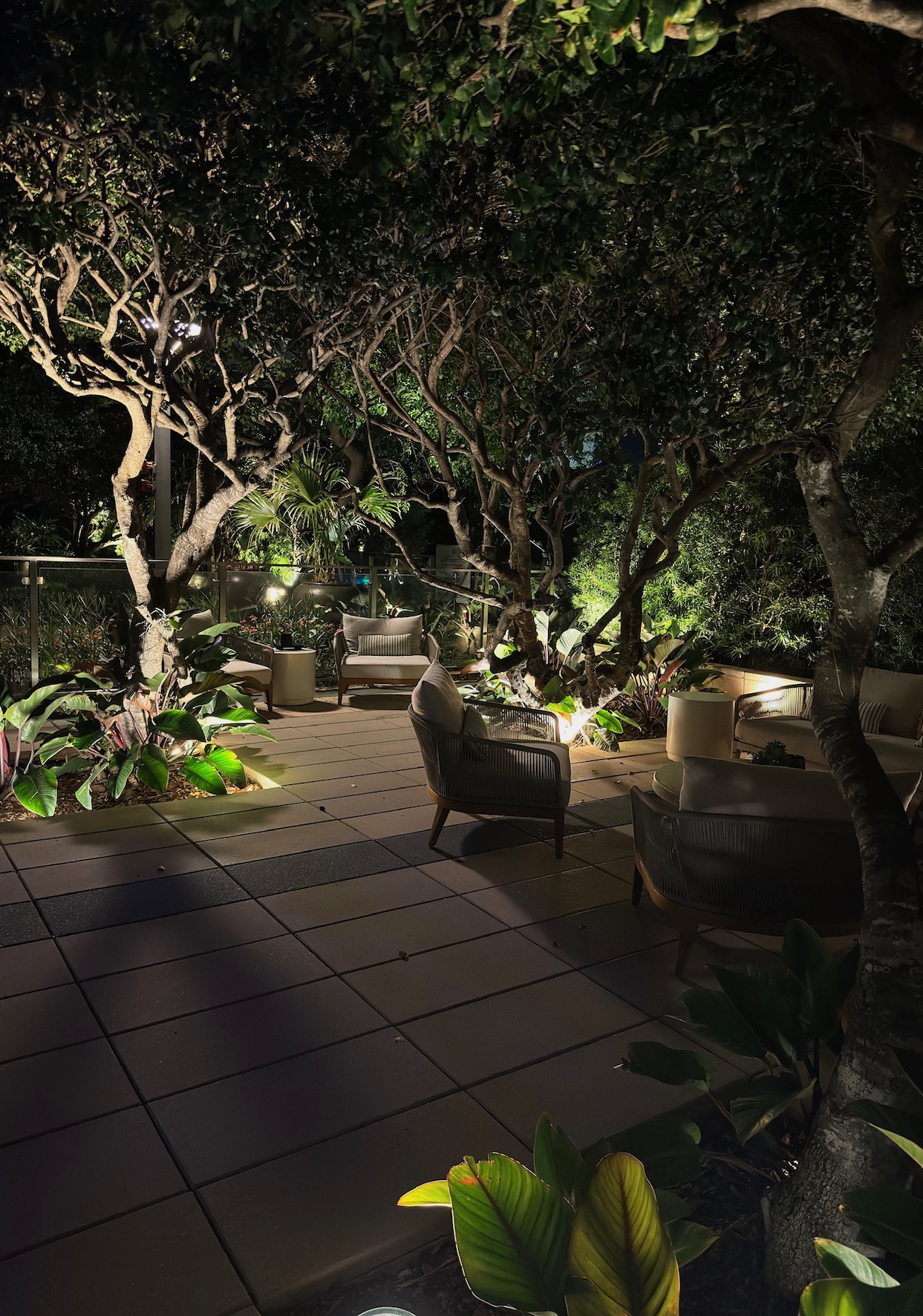
The best outdoor lighting has a practical purpose but can be decorative too. Jon Fargion plays with light in his design schemes.
"Landscape lighting should be discrete, you should never see the source of the light," says the landscape designer and founder of Jon Fargion Design. "Usually I recommend uplighting at the base of the trees. Alternatively, if there are attractive walls, it's nice to uplight the walls as well, creating cones of light in a rhythmic pattern."
6. Moonlight tree branches
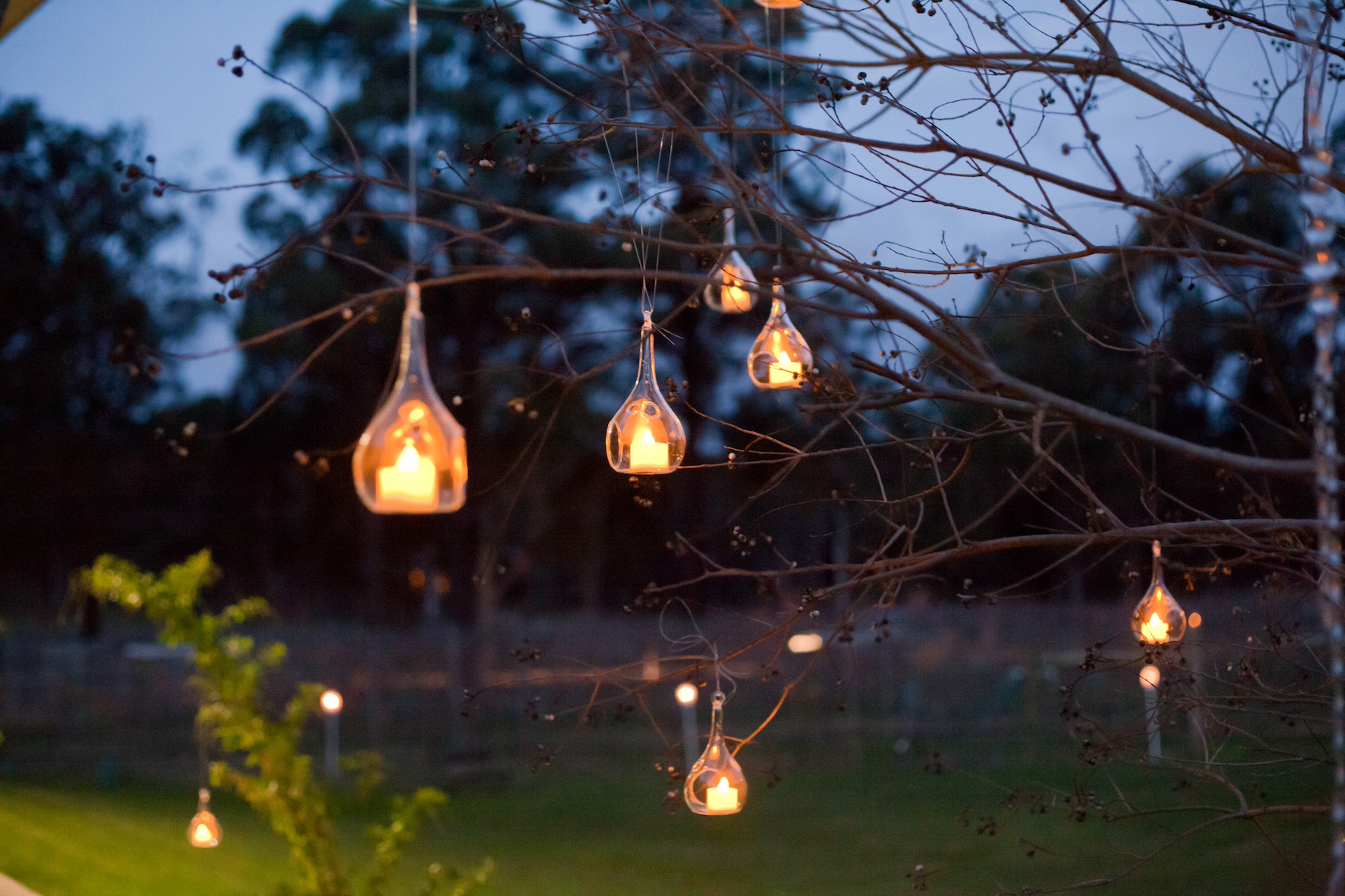
If you have a tree close to your patio, Jon recommends illuminating some of the lower branches. Battery-operated tealights are great for a special occasion.
"It is also worth adding a small downlight dangling from the tree branches," says Jon. "This is called moonlighting, essentially it creates a beautiful intricate shadow of the branches on the stone patio."
Although, you should be sure to turn them off overnight. Light pollution is a huge problem for migratory birds, contributing to issues with their populations.
7. Include pendant ceiling lighting
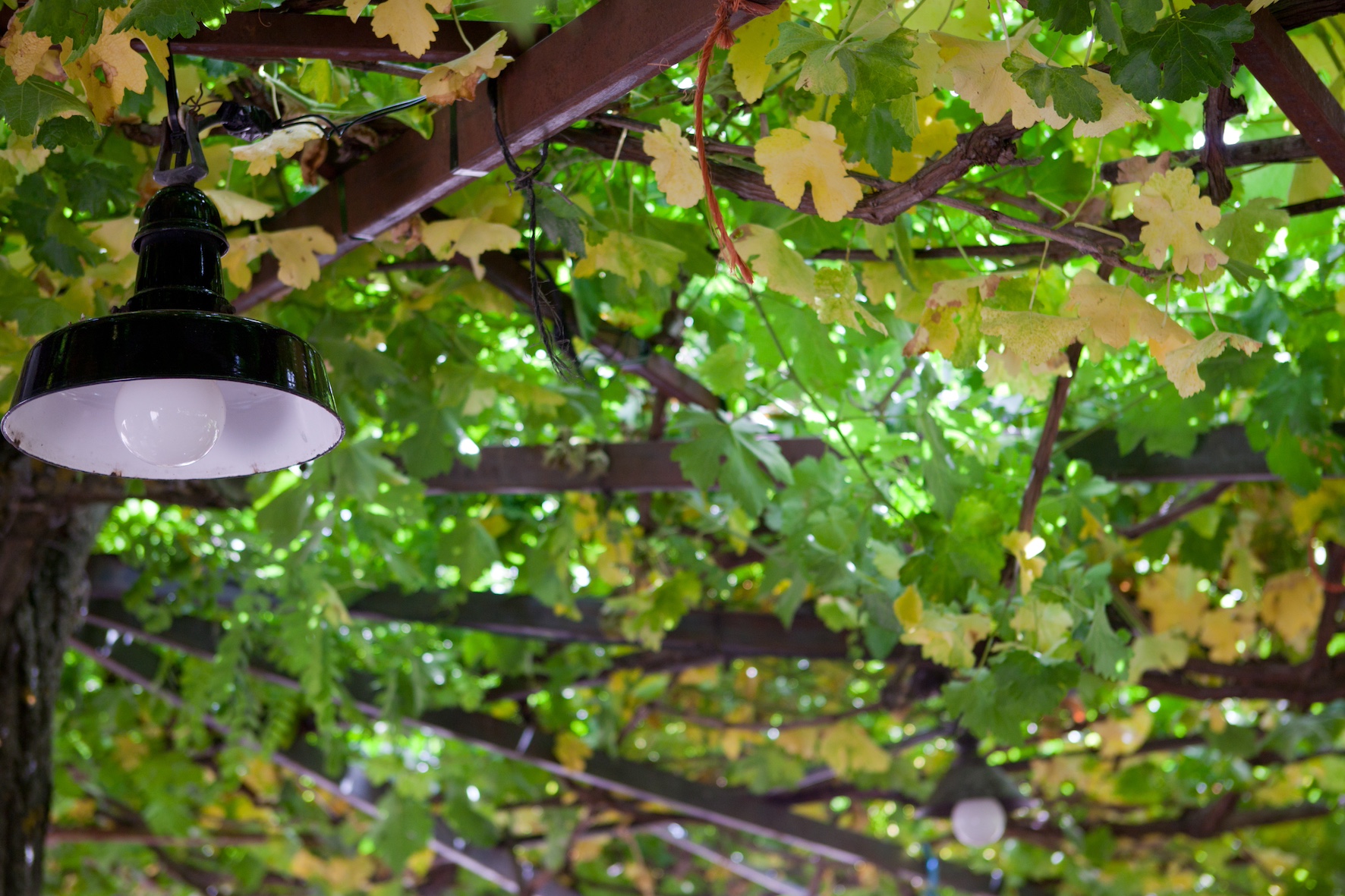
Ceiling lighting outside may sound strange, but if you have a pergola, or a large back porch, pendant lights can be a great choice.
"Creating a layered lighting effect on your patio can enhance its usability and aesthetic appeal," says Nina. By combining wall sconces and ceiling lights, you can achieve a cozy and inviting ambiance. "Use dimmable options to adjust the brightness according to your mood and activities," she says.
8. Opt for discreet recessed lighting
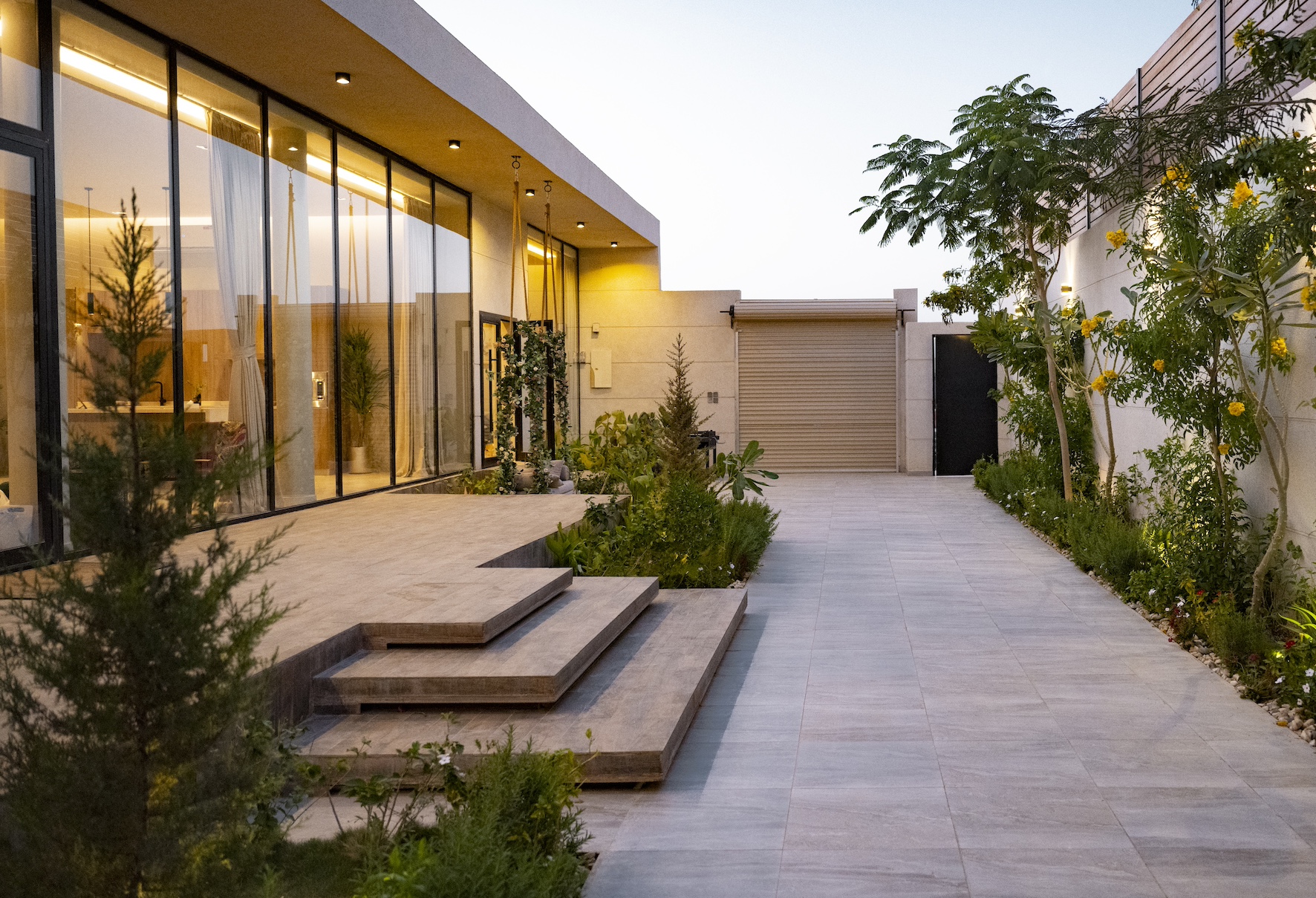
If you prefer a more discreet lighting scheme outside, opt for recessed ceiling lights in a porch overhang or pergola.
"Recessed downlights in pergola or porch beams create functional, focused light on seating or walkway areas," says David Thompson of Assembledge+. "Dimmable, warm-temperature LEDs enhance the ambiance and extend usability during colder months, providing both clarity and comfort."
9. Illuminate features with ground lights
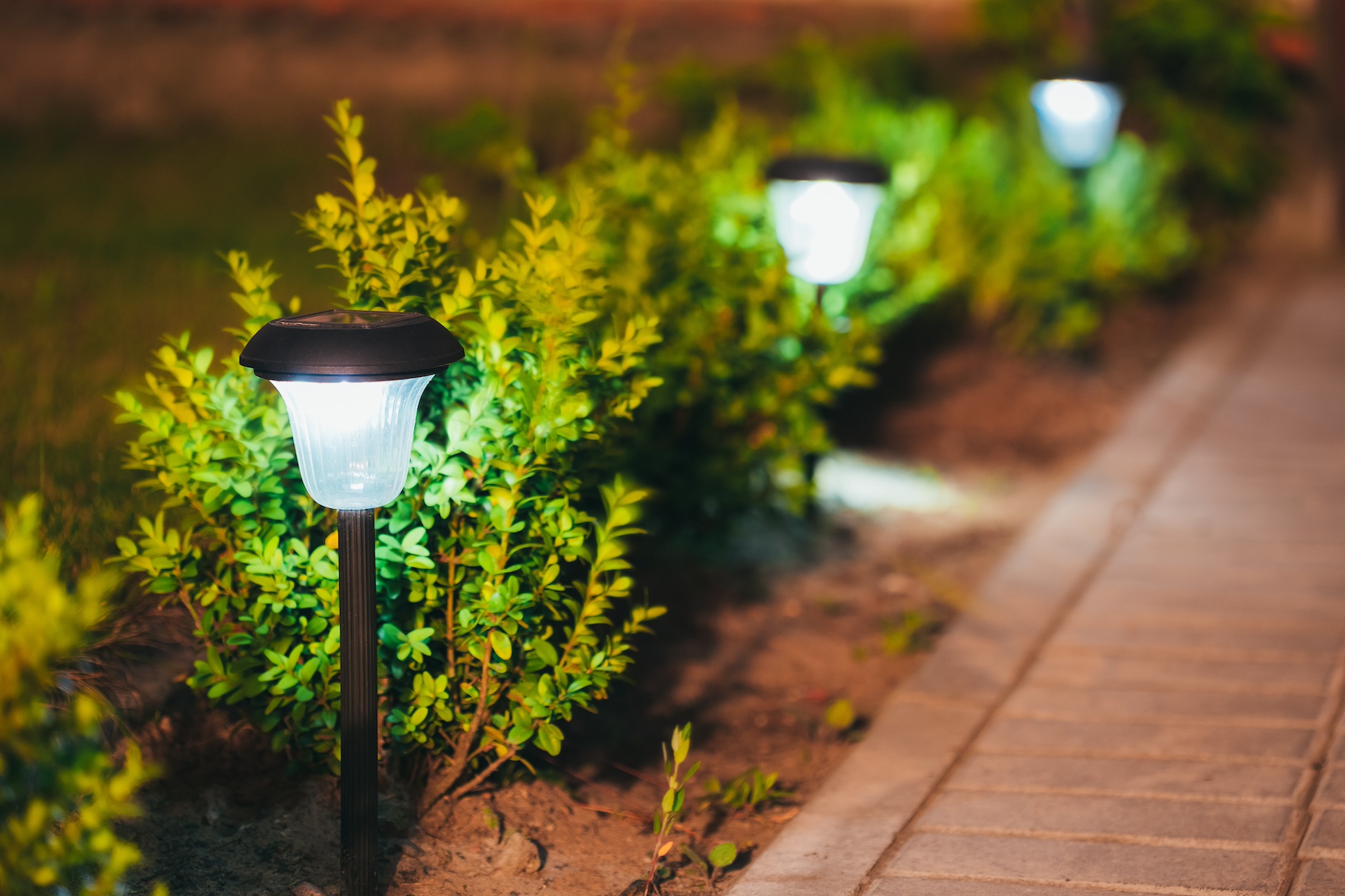
Solar ground lights are useful around pathways, but they can also be used to illuminate features around your patio, such as interesting plants, planters or beautiful sculptures.
"I enjoy installing in-ground lights to highlight specific features, such as garden beds or a firepit area," says Nina. "These low-profile lights create a dramatic effect without overwhelming the space."
10. Have stair lights fitted into steps
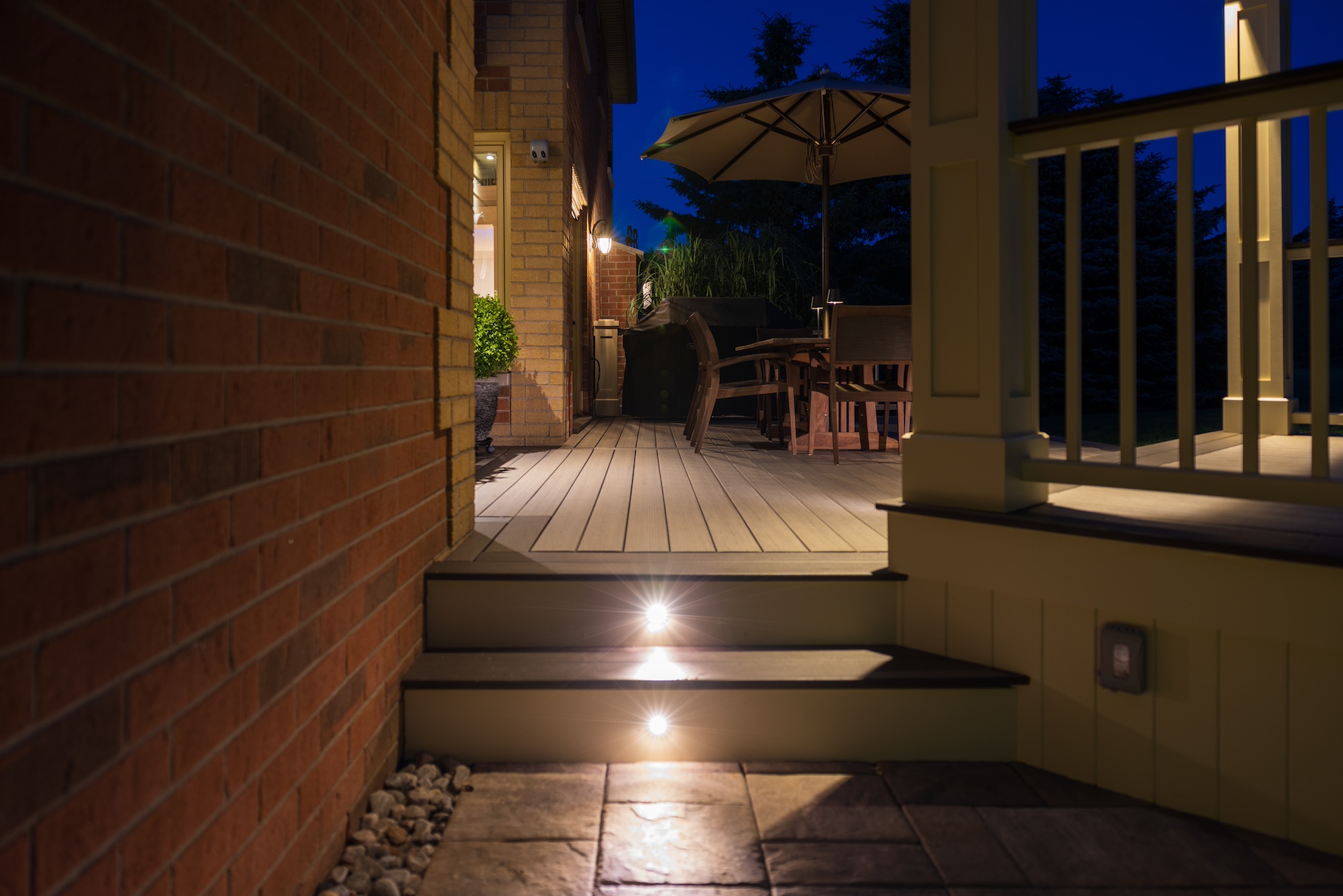
If you have timber decking with steps down to a patio, having stairlights fitted can enable visibility and security in the evenings. Have the lights installed with a sensor, so they only come on when activated.
"By implementing different lighting schemes, you can successfully extend the usability of your patio during winter months," says Nina. "Layered wall and ceiling lighting, ground and pathway illumination, and charming string lights create an inviting atmosphere that encourages outdoor enjoyment."
FAQs
How many lumens do you need to light up a patio?
There isn't a specific number of lumens required to light up a patio, as each space is individual.
"It depends on the context," says New York-based Jon Fargion. "If it's a city project, the city light will help illuminate your space, if you are in the countryside you will likely need more powerful lights.
"Generally speaking I would keep the temperature of the lights at 2700 K which has a warm feeling to it. The fixtures in my project are typically between 1 LED to 3 LED (30 lumen to 70 Lumen)."
How far apart should patio lights be spaced?
"Space wall sconces about 6 to 8 feet apart for even light distribution, ensuring they are positioned at eye level to minimize glare," says Nina Lichtenstein. "For in-ground lights, position them 5 to 6 feet apart to maintain adequate brightness while accentuating landscape features."
David Thompson, founder, Assembledge+ agrees "Patio lights should be spaced approximately 6-8 feet apart to ensure even illumination across the space, depending on the fixture's brightness and area size."







